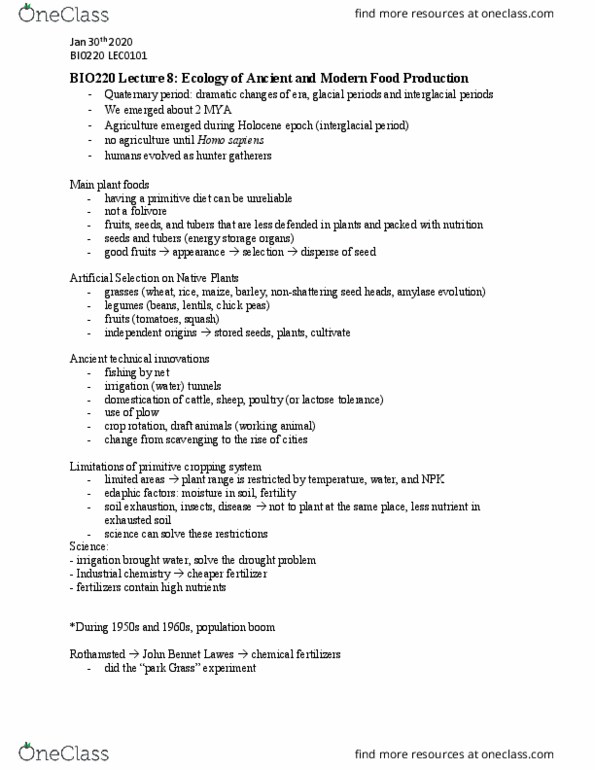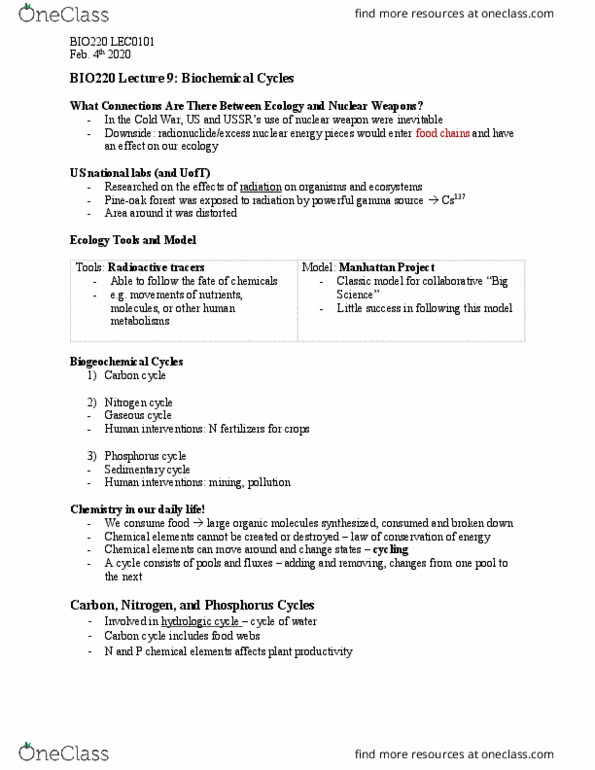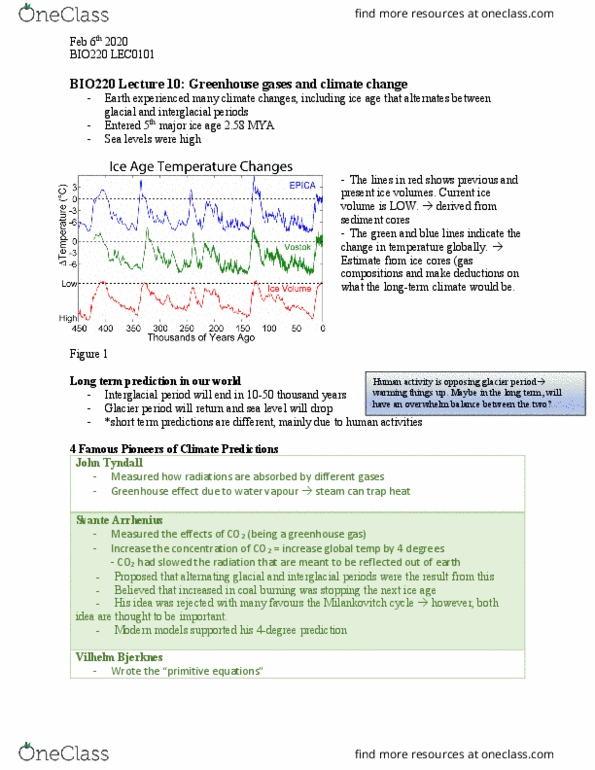BIO220H1 Lecture Notes - Lecture 9: Phosphorus Cycle, Water Cycle, United States Department Of Energy National Laboratories
BIO220H1 verified notes
9/26View all
8

BIO220H1 Lecture Notes - Lecture 8: John Bennet Lawes, Working Animal, Rothamsted Research
9

BIO220H1 Lecture Notes - Lecture 9: Phosphorus Cycle, Water Cycle, United States Department Of Energy National Laboratories
10

BIO220H1 Lecture Notes - Lecture 10: Svante Arrhenius, Primitive Equations, Chlorofluorocarbon
Document Summary
In the cold war, us and ussr"s use of nuclear weapon were inevitable. Downside: radionuclide/excess nuclear energy pieces would enter food chains and have an effect on our ecology. Researched on the effects of radiation on organisms and ecosystems. Pine-oak forest was exposed to radiation by powerful gamma source cs137. Able to follow the fate of chemicals e. g. movements of nutrients, molecules, or other human metabolisms. Little success in following this model: nitrogen cycle. Human interventions: n fertilizers for crops: phosphorus cycle. We consume food large organic molecules synthesized, consumed and broken down. Chemical elements cannot be created or destroyed law of conservation of energy. Chemical elements can move around and change states cycling. A cycle consists of pools and fluxes adding and removing, changes from one pool to the next. Involved in hydrologic cycle cycle of water. N and p chemical elements affects plant productivity.

